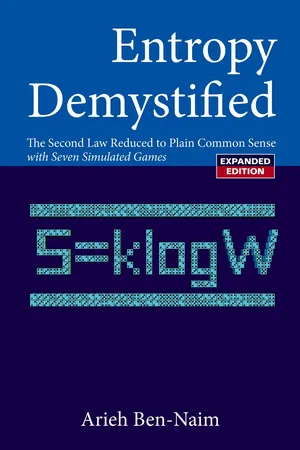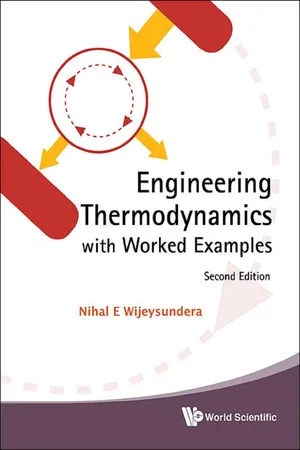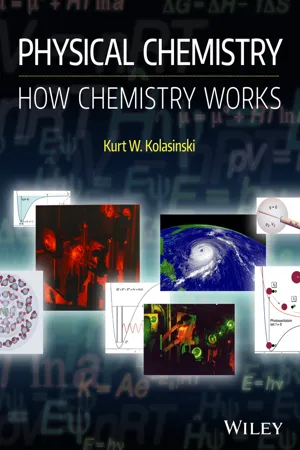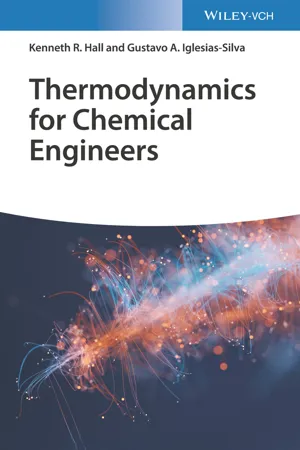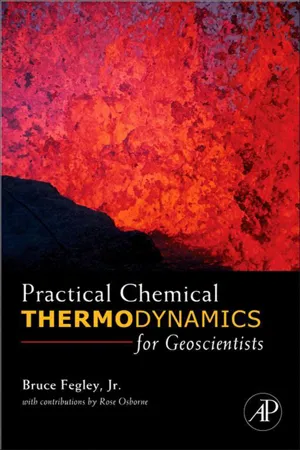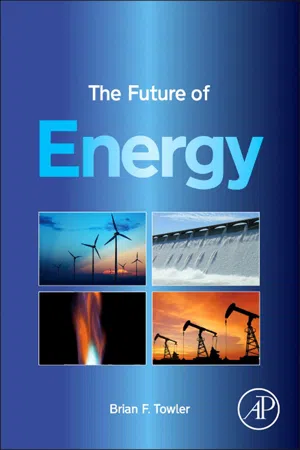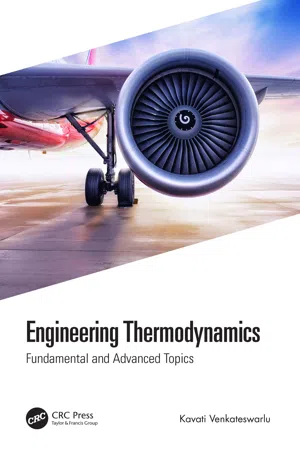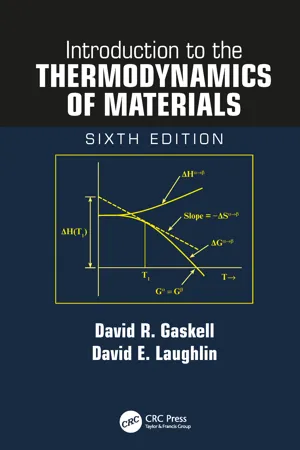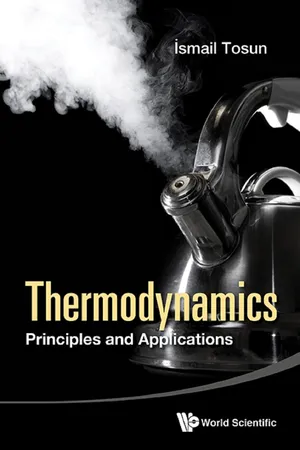Physics
Second Law and Engines
The Second Law of Thermodynamics states that in any energy conversion process, some energy is always lost as waste heat. This law places limits on the efficiency of heat engines, which are devices that convert thermal energy into mechanical work. It implies that no engine can be 100% efficient, as some energy will always be lost to the surroundings.
Written by Perlego with AI-assistance
Related key terms
10 Key excerpts on "Second Law and Engines"
- eBook - ePub
Entropy Demystified: The Second Law Reduced To Plain Common Sense (Revised Edition)
The Second Law Reduced to Plain Common Sense
- Arieh Ben-Naim(Author)
- 2008(Publication Date)
- WSPC(Publisher)
caloric. Carnot was mainly interested in the limits on the efficiency of heat engines. He found out that the limiting efficiency depends only on the ratio of the temperatures between which the engine operates, and not on the substance (i.e., which gas or liquid) that is used in the engine. Later, it was shown that the efficiency of Carnot's idealized engine could not be surpassed by any other engine. This laid the cornerstone for the formulation of the Second Law and paved the way for the appearance of the new term “entropy.”It was William Thomson (1824–1907), later known as Lord Kelvin, who first formulated the Second Law of Thermodynamics. Basically, Kelvin's formulation states that there could be no engine, which when operating in cycles, the sole effect of which is pumping energy from one reservoir of heat and completely converting it into work.Although such an engine would not have contradicted the First Law of Thermodynamics (the law of conservation of the total energy), it did impose a limitation on the amount of work that can be done by operating an engine between two heat reservoirs at different temperatures.In simple terms, recognizing that heat is a form of energy, the Second Law of Thermodynamics is a statement that it is impossible to convert heat (thermal energy) completely into work (though the other way is possible, i.e., work can be converted completely into heat, for example, stirring of a fluid by a magnetic stirrer, or mechanically turning a wheel in a fluid). This impossibility is sometimes stated as “a perpetual motion of the second kind is impossible.” If such a “perpetual motion” was possible, one could use the huge reservoir of thermal energy of the oceans to propel a ship, leaving a tail of slightly cooler water behind it. Unfortunately, this is impossible.Another formulation of the Second Law of Thermodynamics was later given by Rudolf Clausius (1822–1888). Basically, Clausius’ formulation is what every one of us has observed; heat always flows from a body at a high temperature (hence is cooled) to a body at a lower temperature (which is heated up). We never observe the reverse of this process occurring spontaneously. Clausius’ formulation states that no process exists, such that its net effect is only the transfer of heat from a cold to a hot body. Of course we can achieve this direction of heat flow by doing work on the fluid (which is how refrigeration is achieved). What Clausius claimed was that the process of heat transferred from a hot to a cold body when brought in contact, which we observe to occur spontaneously, can never be observed in the reverse direction. This is shown schematically in Fig. (1.2) - eBook - ePub
- Nihal E Wijeysundera(Author)
- 2016(Publication Date)
- WSPC(Publisher)
Chapter 6
The Second Law of Thermodynamics
In the last two chapters of this book we applied the first law of thermodynamics to closed and open systems considering both quasistatic and non-quasi-static processes. A question that arises naturally is whether all processes that satisfy the first law could be carried out in practice. In order to explore this question we need to introduce the second law of thermodynamics which teaches us that there are additional conditions for the feasibility of a process. In particular, the irreversibility of natural processes is an important consequence of the second law.There are several statements of the second law, which at first appear to be unrelated. However, by treating any one of the different statements of the second law as a postulate, all the other statements could be deduced logically. The first law predicted the existence of a property, which was called the internal energy of a system. In a similar manner, we shall derive a new property called the entropy by applying the second law to a system. In developing the second law we propose to follow the historical route that involves cyclic processes and heat engines. From an engineering perspective, this approach is deemed to be more practical, and closely related to the subject matter covered in the preceding chapters.6.1The Heat Engine Cycle
One of the main functions of a majority of energy conversion systems is to generate motive power or work using stored energy from various fuels. The steam power plant, which operates on the vapor power cycle, is a common example of such an energy conversion system. The various processes that constitute a typical vapor power cycle could be carried out using the piston-cylinder arrangement shown in Fig. 6.1 . Initially, (Fig. 6.1(a) ) the well-insulated cylinder contains a compressed liquid with the weights on the piston generating the desired high pressure of the cycle. The bottom section of the insulation around the cylinder is now removed and a heat source is applied to the cylinder to heat the liquid (Fig. 6.1(b) - eBook - ePub
- V. Babu(Author)
- 2019(Publication Date)
- CRC Press(Publisher)
CHAPTER 8SECOND LAW OF THERMODYNAMICS
In this chapter, the second law of thermodynamics is introduced from the perspective of the performance of devices (engines) that execute a cyclic process. Two different statements of the law are given and discussed. Most importantly, their equivalence is established. Limits imposed by the second law on how best these devices can perform are also discussed.8.1 Need for the second law
Consider again the example discussed in section 4.1 , where 100 J of energy is transferred to the system in three different ways to be converted to work. It was said that when heat is supplied to a system, it is utilized to increase the energy associated with molecular motion, which is disordered. Hence, it cannot be converted entirely into work. In an engineering context, years of efforts to improve the performance of engines that convert heat into work, and run continuously, led to the realization that there is fundamentally a limit on how efficient such engines can be, even under ideal circumstances. Interestingly enough, the first law, Eqn. 4.1 , seemed to place no such restriction - the heat supplied could entirely be converted to work without violating it. This conflict suggests that there is another fundamental law in action.In addition, first law is also unable to explain the preferred directionality of many processes that are seen in nature. For instance, mixing takes place most readily on its own, however, once mixed, the constituents never have been seen to separate out on their own. Air in a high pressure vessel escapes most easily on its own but the reverse does not happen spontaneously. Most, if not all, spontaneous processes† in nature always take place in one direction on their own but not in the opposite direction, although the first law does not forbid this from happening.The above considerations clearly bring out the need for a second law. The interested reader is referred to the books by Peter Atkins in which, many, many more interesting, every day examples for motivating the need for the second law are discussed. - eBook - ePub
Physical Chemistry
How Chemistry Works
- Kurt W. Kolasinski(Author)
- 2016(Publication Date)
- Wiley(Publisher)
CHAPTER 8 Second law of thermodynamicsPREVIEW OF IMPORTANT CONCEPTS
- The First Law of Thermodynamics is a statement of energy conservation, which does not describe the direction of spontaneous change.
- The Second Law of Thermodynamics states that there exists a property called entropy S. The entropy of the universe increases in any spontaneous process, ΔStot > 0.
- The entropy of a system is determined by the number of different ways to distribute the available energy over the various states of the system.
- For an isolated system, equilibrium is achieved when entropy has a maximum value.
- The statistical mechanical and thermodynamic definitions of entropy are equivalent.
- A reversible Carnot cycle is representative of the most efficient heat engine.
- Partial derivatives and Maxwell's relations can be used to calculate changes in state functions when more than one variable is changing.
When two chemicals are mixed together do they react? This is an existential question for a synthetic chemist. Not much chemistry is performed without making products. From the Zeroth and First Laws of Thermodynamics we have defined a state variable (temperature T) and two state functions (internal energy U and enthalpy H) that we know exist and are rather fundamental. Certainly, temperature changes upon mixing and subsequent reaction are indicative of chemical changes. The temperature increases when an exothermic reaction occurs in a thermos flask and decreases during the course of an endothermic reaction. We quantify the changes in U and H by measuring temperature changes at either constant volume or constant pressure.We have an instinctive feeling that systems tend to lower their energy. Raise a coffee mug one meter off the ground. Let go. The result is inevitable. The system (ceramic plus finely brewed dark roasted aqueous extract of Arabica beans) spontaneously falls to the ground to lower its energy. Gravitational potential energy is converted into translational energy as the system accelerates toward the floor. Then a fraction of this energy is converted into vibrations and sound waves, while another portion is used to overcome the cohesive energy of the ceramic as the mug strikes the floor. There must be a chemical potential – a concept introduced by J. Willard Gibbs much like the gravitational potential – that indicates which direction is ‘downhill’ for chemical reactions. - eBook - ePub
- Kenneth Richard Hall, Gustavo Arturo Iglesias-Silva(Authors)
- 2022(Publication Date)
- Wiley-VCH(Publisher)
4 Second Law of Thermodynamics4.1 Introduction
We have learned that energy is a conserved variable and that transformations of energy follow the first law of thermodynamics. The second law, like the first law, is a part of normal human experience (except it is easier to observe its effects directly that those of the first law). Using the second law, we can determine the unique direction in which a spontaneous process proceeds, and how this direction relates to equilibrium (because spontaneous processes always proceed in the direction of equilibrium). For example, a stone can fall until it hits the ground, a perfume (concentrated solution) can disperse into the air (dilute solution) until it reaches a certain concentration, when two objects are in close contact excluding any interaction between them and their surroundings, the cold one always becomes hotter and the hot one becomes cooler. In other words, we must conserve energy, but we cannot do it just anyway we wish!We know from experience that the above examples occur in a specified direction, but the second law tells us mathematically why they must proceed in those particular directions. Interestingly, we can apply the first law to a system moving in either direction, and formulate an expression for each path (the expression is the same but with opposite signs), but the first law cannot determine the correct direction. In general, natural processes (removed from external forces) proceed toward a state of macroscopic rest with uniform distributions of temperature and concentration. In other words, natural processes proceed only in one direction, and they cannot return spontaneously to their original states without assistance from external forces.How can we relate the second law to our everyday experiences? We know that it can tell us if a process can proceed in certain directions, but we also can include the efficiency - Bruce Fegley Jr.(Author)
- 2012(Publication Date)
- Academic Press(Publisher)
Chapter 6
The Second Law of Thermodynamics and Entropy
Die Entropie der Welt strebt einem Maximum zu . (The entropy of the universe increases to a maximum.)—Rudolf Clausius (1865)Es ist unmöglich, eine Maschine zu konstruieren, die fortdauernd die Wärme der Umgebung in äußere Arbeit verwandelt . (It is impossible to construct a machine that continuously converts the heat of its surroundings into external work.)—Walther Nernst (1924) The law that entropy always increases—the second law of thermodynamics—holds, I think, the supreme position among the laws of Nature. —Sir Arthur Eddington (1929)Chapters 3 through 5 described the first law of thermodynamics and several of its applications. We can summarize this discussion by stating that the first law expresses the equivalence of the various forms of energy in general and of thermal energy (heat) and mechanical energy (work) in particular. The first law and the equations derived from it are general in their application. (The relationships derived for an ideal gas can be modified for real gases, as we will discuss later.)In this chapter we introduce the second law of thermodynamics. The second law is fundamentally different from the first law because it predicts the direction of spontaneous change for all chemical and physical processes. It also quantifies the amount of waste heat that is produced when heat is transformed into electrical or mechanical work. The first law does not consider either of these two important questions. These predictions depend on entropy , which is a new state function that is defined by the second law.This chapter is divided into nine sections. Section I reviews key definitions that were introduced earlier and are important for this chapter’s discussion. In particular, we review the definitions of reversible and irreversible processes. In Section II we discuss the historical development of the second law, which took 30 years. We give several verbal statements of the second law in Section III . These statements are easy to understand and convey the meaning of the second law. Section IV describes the Carnot cycle, which is a reversible thermodynamic cycle of an ideal machine that can be used as a heat engine (i.e., for converting heat into work) or as a heat pump (i.e., for cooling and refrigeration). The Carnot cycle is one of the most important concepts in thermodynamics and is the foundation of the second law. We use the Carnot cycle to calculate the maximum possible efficiency of any real heat engine and to show it is impossible to reach absolute zero. In Section V we use the Carnot cycle to define the thermodynamic (or absolute) temperature scale. We define entropy, discuss entropy changes for a system and its surroundings during reversible and irreversible (or spontaneous) processes, and give a mathematical statement of the second law in Section VI . In Section VII we discuss some applications of the second law. We first derive the combined first and second law, also known as the fundamental equation . Then we use the fundamental equation to calculate entropy changes for chemical and physical processes. We also describe entropy calculations for solids, liquids, and gases. We close Section VII with a description of entropy estimation methods for minerals. We introduce two new state functions, the Gibbs and Helmholtz free energies, in Section VIII , and use them to quantify the maximum work and net work that are obtained when heat is transformed into work. We then use the Gibbs free energy to calculate entropies for aqueous ions. Section IX- eBook - ePub
- Brian F. Towler(Author)
- 2014(Publication Date)
- Academic Press(Publisher)
Reflections on the Motive Power of Fire and the Machines Needed to Develop This Power . This paper presented the idea that the amount of work done by a heat engine is due to the flow of heat from a hot to a cold body. Carnot’s understanding of heat was still mired in the incorrect caloric theory of heat, but his conclusions were still valid. His analysis determined that the theoretical heat that could be transferred to the heat engine was proportional to the temperature difference between the heat source (the hot body) and the heat sink (the cold body). This analysis allowed him to calculate the theoretical efficiency of a heat engine, which turned out to be much lower than the efficiency of other energy conversion processes.Using Carnot’s analysis, several people were able to deduce different statements of the second law of thermodynamics. Some of these are:1.It is impossible to produce work in the surroundings using a cyclic process connected to a single heat reservoir (Thomson, 1851 ).2.It is impossible to carry out a cyclic process using an engine connected to two heat reservoirs that will have as its only effect the transfer of a quantity of heat from the low-temperature reservoir to the high-temperature reservoir (Clausius, 1854 ).3.In any process, the entropy of the universe increases, causing it to tend towards a maximum (Clausius, 1865 ).This third statement introduces the concept of entropy and puts the law on a more mathematical basis. Since the amount of heat transferred in any process depends on the temperature of the body transferring the heat, entropy is defined as the heat transferred divided by the temperature, T , at which it is transferred. Giving entropy the symbol S and the heat transferred the symbol Q , by definition:S = Q / TA certain understanding of entropy is required to fully understand the limitations of energy usage. This is illustrated in Appendix A and discussed in the next section.One of the consequences of the second law of thermodynamics is that, when you burn fuel to drive a heat engine, only some of the heat from the fuel can be converted to work in the engine. The rest must be rejected to a heat sink, which is usually the atmosphere surrounding the engine. Consequently, heat engines are inherently inefficient. Another consequence is that heating your house with an electric heating element is going to be much more expensive than using most other fuels. This is because the electricity has been created using an inefficient heat engine where some of the heat had to be rejected to the surroundings. If your goal is to increase the temperature of some space (such as your house), it is better to burn a fuel directly and capture as much of that heat in your house as possible. The efficiency of direct heating by burning a fuel is much higher than creating electricity where some of the heat must be lost. All of this was analyzed by Sadi Carnot using his Carnot cycle and published in 1824. - eBook - ePub
Engineering Thermodynamics
Fundamental and Advanced Topics
- Kavati Venkateswarlu(Author)
- 2020(Publication Date)
- CRC Press(Publisher)
First, it is impossible to make a water wheel that can convert all the energy available at the inlet to wheel into shaft work (output). There must be some outflow of water from the wheel with some accompanied energy.- To predict the direction of a process.
- To establish the conditions for equilibrium.
- To evaluate the best theoretical performance of the cycles and other devices.
- To assess quantitatively the factors that prevent the accomplishment of best theoretical performance.
- To define the temperature scale that is independent of the properties of a thermometric substance.
6.2.1 Kelvin–Planck Statement
It has been mentioned in Section 6.1 that work can be completely converted into heat and complete conversion of heat into work in a cyclic process is impossible. A special device known as heat engine is required for this purpose. A heat engine is a device which produces useful work by converting a part of heat received from a high-temperature source and rejects the waste heat to the sink. The first law of thermodynamics states that during any cycle that a system undergoes, the cyclic integral of the heat is equal to the cyclic integral of the work. However, it places no restrictions on the direction of flow of heat and work. A cycle in which a given amount of heat is transferred from the system and an equal amount of work is done on the system satisfies the first law just as well as a cycle in which the flows of heat and work are reversed. - eBook - ePub
- David R. Gaskell, David E. Laughlin(Authors)
- 2017(Publication Date)
- CRC Press(Publisher)
3 The Second Law of Thermodynamics 3.1INTRODUCTIONIn Chapter 2 , it was seen that when a system undergoes a change of state, the consequent change in the internal energy of the system is dependent only on the initial and final states and is equal to the algebraic sum of the thermal energy, q , and work, w , effects. Two questions now arise.1.What magnitudes may the q and w effects have?2.What criteria govern these magnitudes? Two extreme cases related to the first question can occur.•w = 0 and q = ∆U′•q = 0 and w = –∆U′But if q ≠ 0 and w ≠ 0, a third question arises.3.Is there a definite limit to the amount of work which the system can do during its change of state?The answers to these questions require an examination of the nature of the processes which affect q and w . This examination, which is made in this chapter, identifies two types of processes (reversible and irreversible processes) and introduces a state function called the entropy (S ).The concept of entropy will be introduced from two different starting points. In Sections 3.2 through 3.8, entropy will be seen as a quantification of the degree of irreversibility of a process. In Sections 3.10 through 3.14, it will be seen that, as a result of an examination of the properties of reversibly operated heat engines, there naturally develops a quantity which has all the properties of a thermodynamic state function. This state function is the entropy. These findings lead to a statement of the Second Law of Thermodynamics, which, together with the other laws of thermodynamics lay the foundation for the thermodynamic method of describing the behavior of matter to be discussed in the text.3.2SPONTANEOUS OR NATURAL PROCESSESA system left to itself will do one of two things: it may remain in the state in which it happens to be or it may change of its own accord to some other state. That is, if the system is initially in equilibrium with its surroundings, then, left to itself, it will remain in this equilibrium state. On the other hand, if the initial state is not the equilibrium state, the system will spontaneously* (i.e., without any external influence) move toward its equilibrium state. The equilibrium state is a state of rest (at least at the macroscopic level), and thus, once at equilibrium, a system will only move away from equilibrium if it is acted on by some external agency. Even then, the combined system, comprising the original system and the external agency, is simply moving toward the equilibrium state of the new combined system. A process which involves the spontaneous movement of a system from a nonequilibrium state to an equilibrium state is called a natural or spontaneous process. Since such a process cannot be reversed without the application of an external agency which leaves a permanent change in this agency, such a process is said to be irreversible . The terms natural , spontaneous , and irreversible - eBook - ePub
Thermodynamics
Principles and Applications
- İsmail Tosun(Author)
- 2015(Publication Date)
- WSPC(Publisher)
Fig. 5.24 Variation in absolute entropy as a function of temperature. 5.8.3The third law of thermodynamicsAbsolute zero (or zero degrees Kelvin) is the lowest limit on temperature. The third law of thermodynamics states that the entropy of a pure crystal is zero at 0 K. In other words, the movements of all molecules cease at 0 K and W = 1. As a result, Eq. (5.8-1) gives S = 0 J/K. In this way, the third law of thermodynamics provides the reference state for calculating absolute entropies. Fig. 5.24 shows qualitative variation in absolute entropy as a function of temperature for a pure substance.5.9Interpretation of Adages, Songs, and Poems in Terms of the Second Law of ThermodynamicsThe following adages (Smith, 1975) express the concepts of the unidirectionality of events, the trend toward increasing entropy, and eventual attainment of the equilibrium state: • “It’s no use crying over spilled milk”, i.e., you shouldn’t worry about something that has already happened and/or you cannot change. • “Burning your bridges behind you”, i.e., you are ruining any chance you have of going back to where you were. • “Water doesn’t run uphill.” • “Water seeks its own level.” • “What you get is less than what you expect.” The following songs express the ideas of the irreversibility of spontaneous processes: • “All Mixed Up” by Pete Seeger • “I’m Gonna Fade Away” by the Rolling Stones • “The Times They Are a-Changin’” by Bob Dylan In the “Hollow Men”, T.S. Eliot expresses the idea of gradually increasing entropy and the eventual “heat death” of the universe as This is the way the world ends Not with a bang But a whimper. In “Essay on Man” by Alexander Pope, one finds Man is governed by two forces, “self-love” and “reason.” Self-love drives man, reason restraints him. These two lines may be interpreted as representing the balance between entropy and enthalpy and the drive toward equilibrium. ProblemsProblems related to Section 5.15.1
Index pages curate the most relevant extracts from our library of academic textbooks. They’ve been created using an in-house natural language model (NLM), each adding context and meaning to key research topics.
